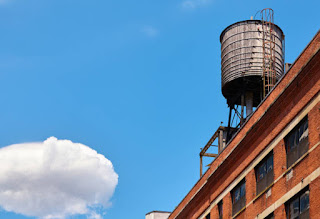Featured
- Get link
- X
- Other Apps
Tales from the Watertank: some reasons why cities like San Francisco and Los Angeles are more spread out than New York
Once upon a time, there was a young woman named Antonella who loved to travel and explore new cities. Her favorite destination was New York City, where she would spend days wandering the bustling streets, admiring the towering skyscrapers and the compact, bustling neighborhoods.
One day, Antonella decided to visit San Francisco, which she had heard was another beautiful and vibrant city. As her plane descended toward the airport, she looked out the window and was struck by the stark contrast between the two cities. San Francisco was spread out over a vast expanse of hills and valleys, with clusters of buildings dotting the landscape rather than the towering skyline she was used to seeing in New York.
Curious about the reasons behind this difference, Antonella decided to do some research. She discovered that the geography and topography of the two cities were a significant factor in their development patterns. San Francisco was located on a peninsula surrounded by water on three sides, with steep hills and valleys creating natural barriers to expansion. As a result, the city had to spread out over a larger area to accommodate its growing population.
Another factor that contributed to the spread-out development of cities like San Francisco and Los Angeles was the rise of car culture and the development of the freeway system. In the mid-twentieth century, many Americans began to see cars as a symbol of freedom and mobility, and the government responded by investing heavily in highways and roads. This, in turn, encouraged the development of suburbs and more spread-out communities.
In contrast, New York City's dense network of public transportation options, including subways, buses, and trains, made it easier for residents to travel within the city without relying on cars. With limited space for expansion, New York City had to develop upward rather than outward, resulting in the iconic skyscrapers that dominated its skyline.
Antonella found all of this fascinating, and her trip to San Francisco gave her a new appreciation for the complex factors that shape the development of our cities. She returned home to New York City with a deeper understanding of the unique character and history of each place and the people who call them home.
- Get link
- X
- Other Apps
Popular Posts
Tales from the Watertank: what New York City will look like in 2025
- Get link
- X
- Other Apps
The Ultimate Guide to Getting from Jersey City to Manhattan: Best Transportation Options
- Get link
- X
- Other Apps


Comments
Post a Comment